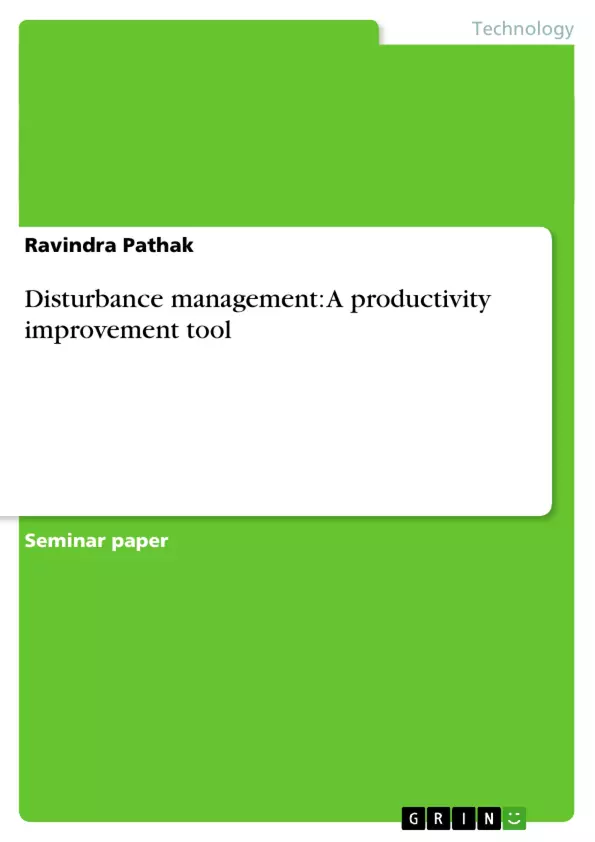Abstract
One of the tasks of the human operator supervising a complex process plant is to respond appropriately to disturbance situation. The aim of this paper is to correlate the productivity improvement and the disturbance management. Disturbance management is basically deviation from assumed position whereas the productivity is related with the output from the system. In disturbance management of complex dynamic systems causal reasoning plays an important role. This paper provides a some aspects of causal reasoning. It deals with the causal field and focus in causal reasoning. By means of simple examples it is shown how productivity is affected by disturbance management
Key Words: Disturbance Management, Productivity
Inhaltsverzeichnis (Table of Contents)
- ABSTRACT
- KEY WORDS
- INTRODUCTION
- WHAT IS DISTURBANCE MANAGEMENT
- Need of Disturbance Management
- WHAT IS PRODUCTIVITY
- METHODOLOGY OF DISTURBANCE MANAGEMENT
- IMPROVING PRODUCTIVITY BY DISTURBANCE MANAGEMENT.
- CONCLUSION
- REFERENCE
Zielsetzung und Themenschwerpunkte (Objectives and Key Themes)
This paper examines the relationship between disturbance management and productivity improvement in complex process plants. It explores the role of causal reasoning in effectively managing disturbances and highlights the impact of disturbance management on productivity levels.
- Disturbance management as a productivity improvement tool
- The importance of causal reasoning in disturbance management
- The impact of disturbance management on process plant efficiency
- Strategies for responding to disturbances in complex systems
- The role of technology and knowledge in effective disturbance management
Zusammenfassung der Kapitel (Chapter Summaries)
The paper begins by introducing the concept of disturbance management and its significance in today's competitive market. It defines disturbance management as a deviation from assumed process conditions and highlights the importance of responding appropriately to such deviations. The paper then discusses the concept of productivity and its relationship to disturbance management, emphasizing the need for efficient resource allocation and utilization to achieve optimal performance. The methodology of disturbance management is explained, with an emphasis on the key elements of communication, knowledge, and technology. The paper concludes by presenting examples of how disturbance management can improve productivity, highlighting the potential benefits of implementing effective strategies for managing disturbances in complex systems.
Schlüsselwörter (Keywords)
The primary keywords and focus topics of the paper include disturbance management, productivity improvement, causal reasoning, complex dynamic systems, process plant efficiency, and resource allocation. The paper explores the theoretical and practical aspects of managing disturbances in industrial settings, with a focus on improving productivity and achieving operational excellence.
- Quote paper
- Ravindra Pathak (Author), 2007, Disturbance management: A productivity improvement tool, Munich, GRIN Verlag, https://www.grin.com/document/76053



